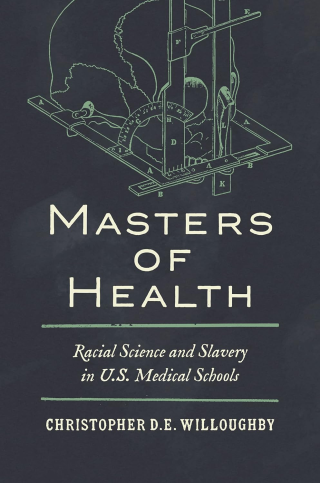Harvard University revealed in a report last year on its engagement with slavery that Sturmann’s corpse was donated to a Harvard anatomy professor, who dissected his body and compared it to those of a gorilla, a chimpanzee and two Europeans. Multiple plaster casts were made of his head, one of which was displayed in a Harvard museum; they’re still in Harvard’s collections. His remains were then transferred to the Boston Society of Natural History, but somewhere along the way his brain was either lost or destroyed, according to conflicting BSNH records. Today, neither Harvard nor the BSNH knows where the teenager’s skeleton is.
But his story continues. Unlike the vast majority of the thousands of human remains that have been collected by the nation’s universities, which have virtually no surviving records, Sturmann’s fate is chronicled in multiple documents, including one academic paper that suggests that he did not kill himself and might even have been murdered.
Christopher Willoughby, a historian at the University of Nevada at Las Vegas, who has written that Sturmann “epitomizes a case of a person whom White scientists tried to fashion into an image of Black inferiority,” is working to track down the teenager’s skeleton.
“If Harvard lost his remains due to bureaucratic disinterest many years ago, that is not good,” Willoughby said. “But it is worth looking for them. My goal is to find his remains and return them to South Africa.”
Put on display
White imperialism defined Sturmann’s life from the moment of his birth. His name was of Dutch origin, reflecting South Africa’s history of colonial domination. (The Union of South Africa wouldn’t be established until 1910, but the territory was widely known as South Africa.) He’s believed to have been Khoekhoe, but he reportedly never learned his people’s native language; instead, he spoke English and Dutch. He was apparently born in the region of Little Namaqualand, but as a young man he migrated to Port Natal (now called Durban), which was controlled by the British.
Much of his youth was spent either evading White men or working for them.
Sturmann was working in Port Natal in the summer of 1860, leading hunting exhibitions for White men, when the captain of an American ship asked him if he “would like to go over the sea to America, and have plenty of fine clothes and food, and earn plenty of money, to bring back to his own country,” according to a pamphlet titled “The Aborigines of South Africa,” which provided Boston audiences with brief biographies of the five “wild savages.” And so it was that the teenager “made a bargain with the white man and came over in a big ship.”
